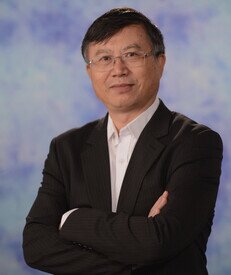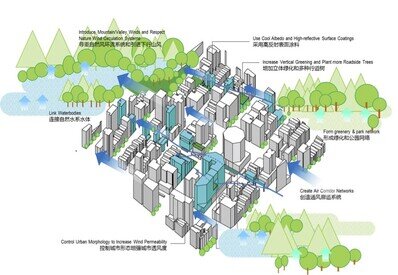Creating Breathable Cities
Urban ventilation has been an important but at times overlooked factor in improving air pollution and mitigating urban overheating. One of the world’s experts on its benefits is Professor Chao Ren of the Faculty of Architecture, who has helped to convince policymakers in Mainland China, various cities around the world and international organisations of the need for policies and programmes to improve the urban wind environment.
“In big cities with high densities and tall, closely spaced buildings, the population can be starved of the natural air conditioning from wind ventilation,” she said. “Our work has been to apply climate science knowledge and evaluation assessments in planning and design to create a better liveable environment for citizens.”
The focus on urban ventilation, which earned Professor Ren and Professor Yuguo Li of the Faculty of Engineering the 2023 KE Excellence Award at HKU, began with SARS in 2003. Prof Li’s research showed that poor ventilation between buildings had helped the virus to spread in Hong Kong, thus, new large building developments were proposed to be evaluated at the design stage to protect urban ventilation at the site level from worsening.
Later, from 2006 to 2012, Prof Ren and local researchers worked on evaluating urban ventilation at the entire city level. In a government-commissioned study, they developed a wind information map and identified potential wind sources, such as prevailing sea breezes, channelling wind and cooling hillside air to meet summer thermal comfort needs for planning purposes. The findings have been implemented by the Planning Department of the Hong Kong government in new town plans and old town renewal since 2007.
“For instance, if a 30-storey building is planned for an area that is critical for urban ventilation, then maybe the height needs to be reduced or holes created in its façade. Sometimes it might be necessary to change the land use to a non-building area,” she said.
Around 2010, Prof Ren’s Hong Kong work started attracting attention from city governments in China, such as Beijing, Wuhan, Chengdu, Changchun and Foshan, which were rapidly developing and facing serious air pollution problems. Their planning departments sought out her expertise and Prof Ren shared the rich scientific research and successful implementation experiences from Hong Kong, while further investigating the benefits of wind corridors. For the latter, she and her team devised scientific models and assessments that were implemented in urban planning and design systems in China. Prof Ren then pulled together her research and experiences into a Chinese-language book, translated as Breathing Cities, on urban wind ventilation and wind corridor plans, that was published in 2016 and sold out within one year.
Her book and achievements also attracted attention from the China Meteorological Administration, which invited her to join their expert team to develop an industry technical note on wind corridor plans and a national standard on urban climate application. These have been endorsed by the Ministry of Natural Resources within the past five years, which has also required all cities in China to consider the wind corridor plan in their city-level spatial planning of national land resources and city master plan update exercises. Currently, more than 40 cities have implemented such wind corridor plans in their city planning.
Furthermore, Prof Ren’s work was cited in the Sixth Assessment Report of Intergovernmental Panel on Climate Change (IPCC Ar6) and three guides issued by the World Meteorological Organisation (WMO) that focused on the role of wind ventilation in alleviating urban heat. City planners in Arnhem in the Netherlands, Singapore, Kaohsiung in Taiwan and Toulouse in France have also sought her input and advice. Prof Ren is also a member of the management committee of the Global Heat-Health Information Network funded by the WMO and World Health Organization.
“We are now officially in the era of global boiling, and I have been sharing information about measures with the Hong Kong Red Cross and government officials to achieve better heat resilience. Our work is often cited because improving urban ventilation is also critical to achieving a comfortable urban environment during a heatwave,” she said.
“Our emphasis in the past was on air pollution but in future, as cities put effort into adaptation and resilience against climate change and urban heat, improving the wind environment will be an important and urgently-needed consideration.”




